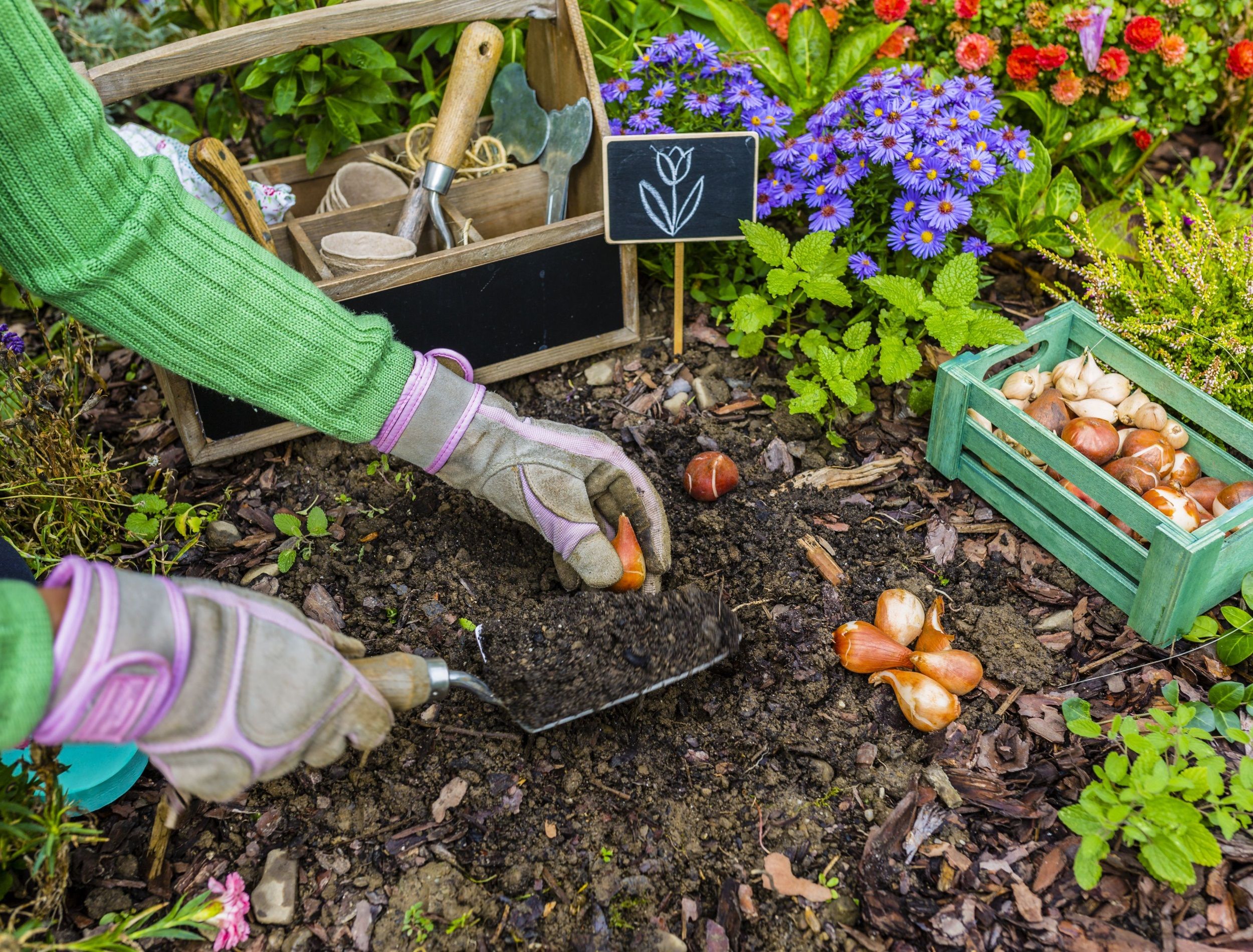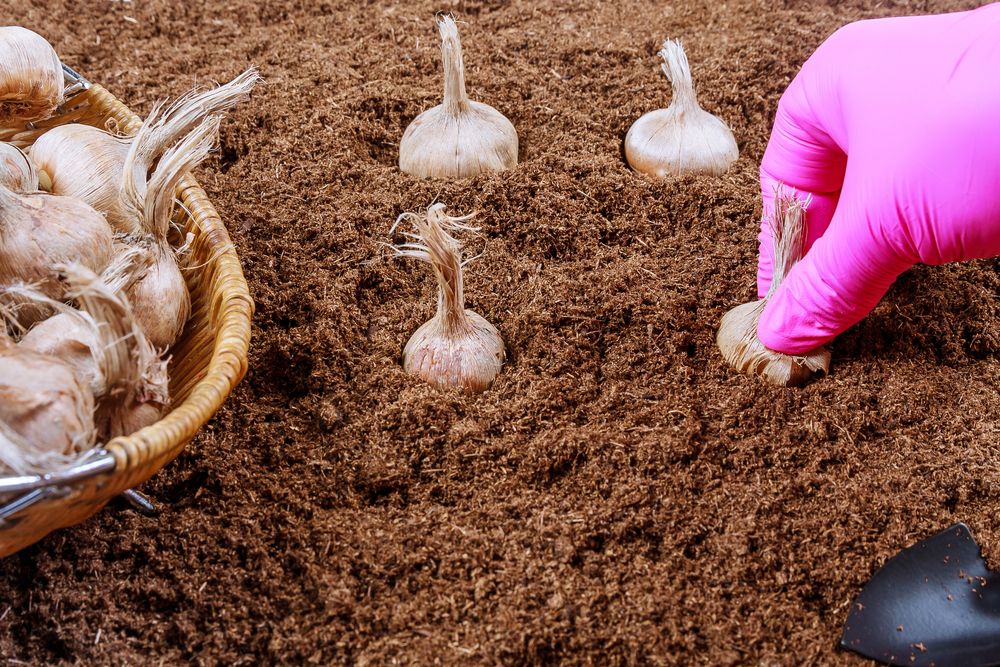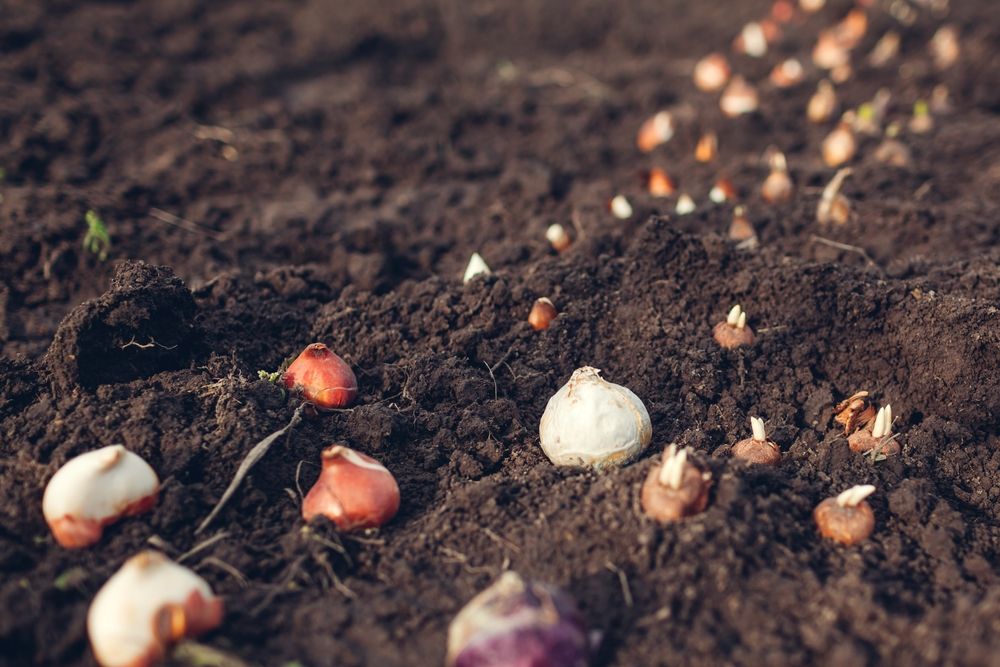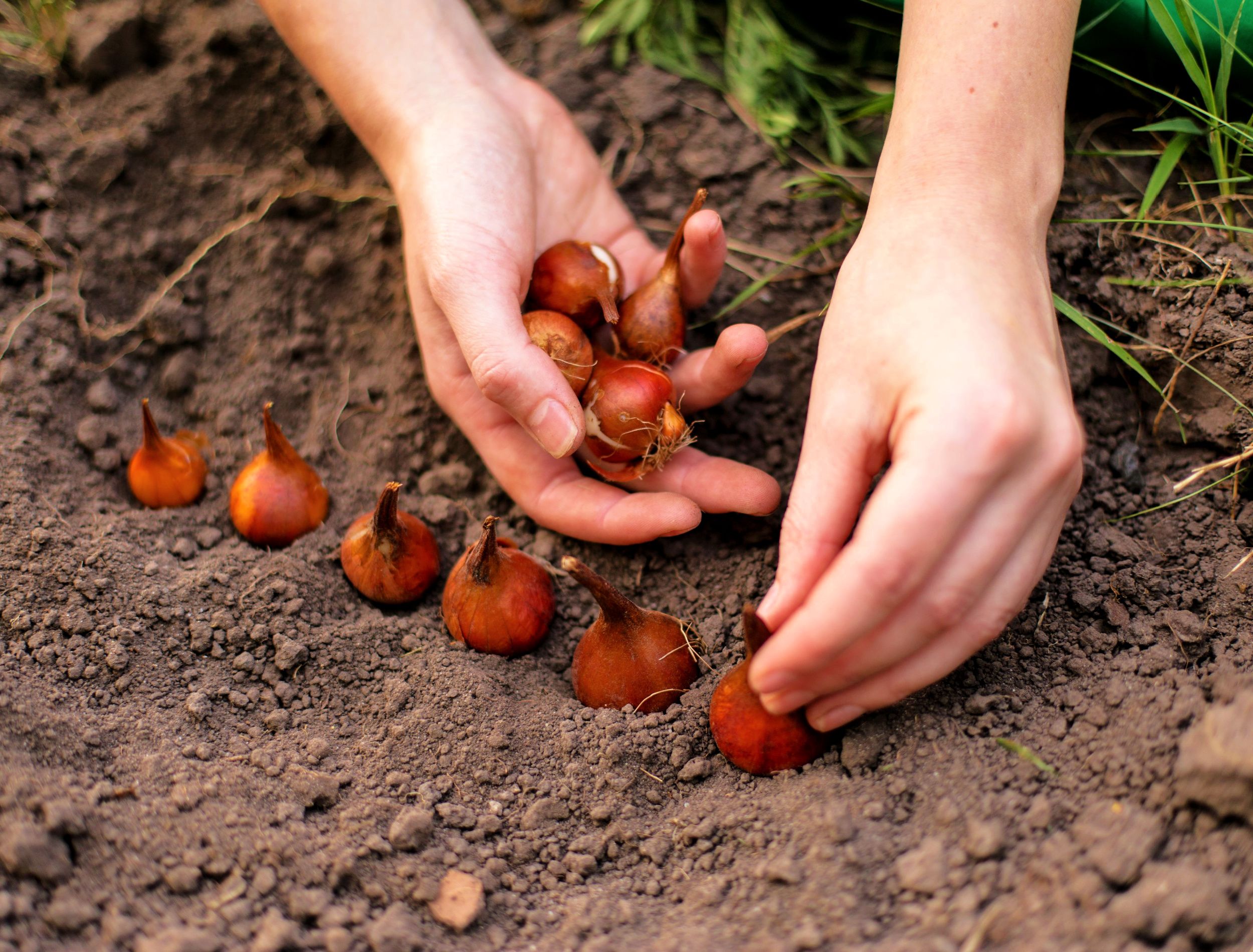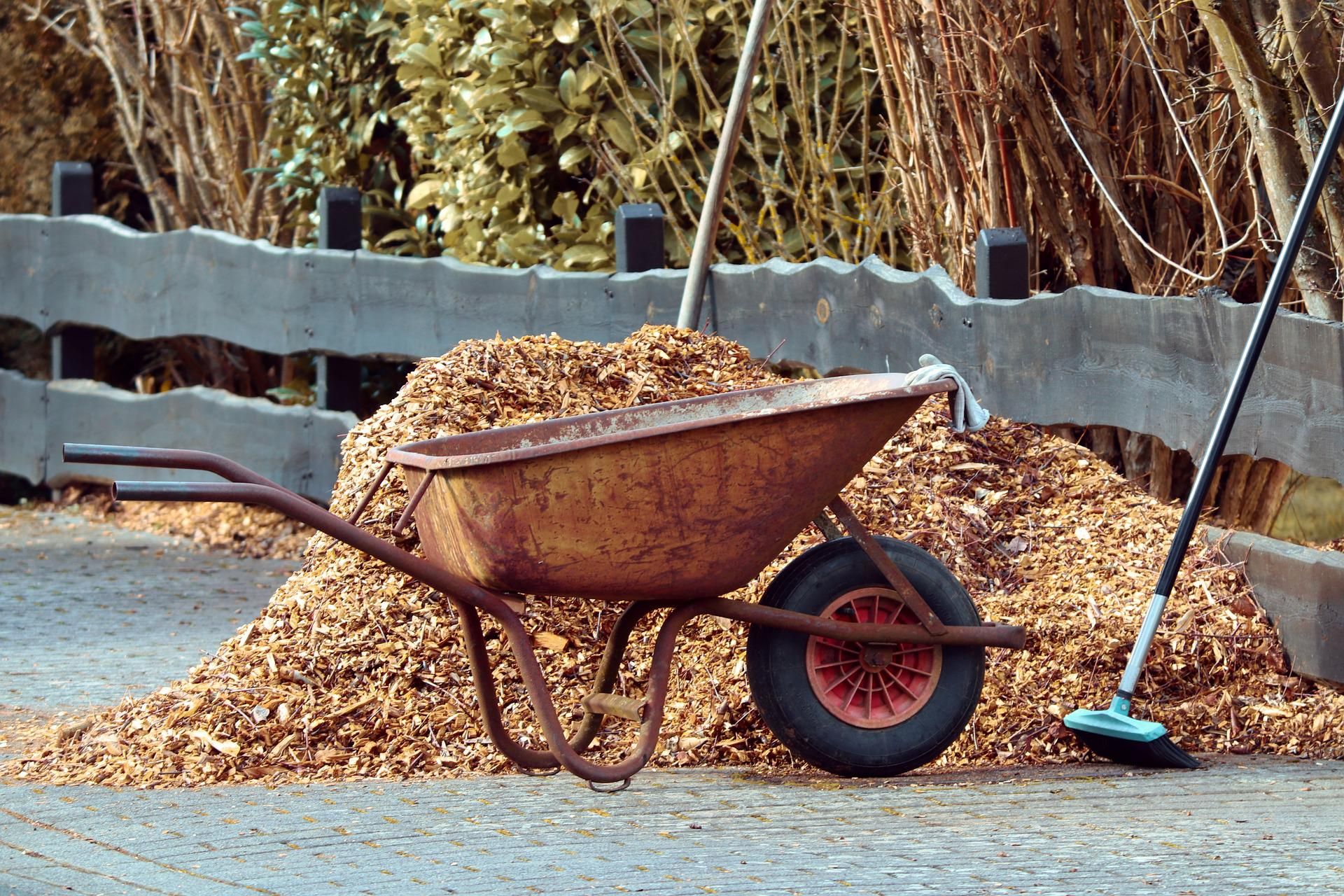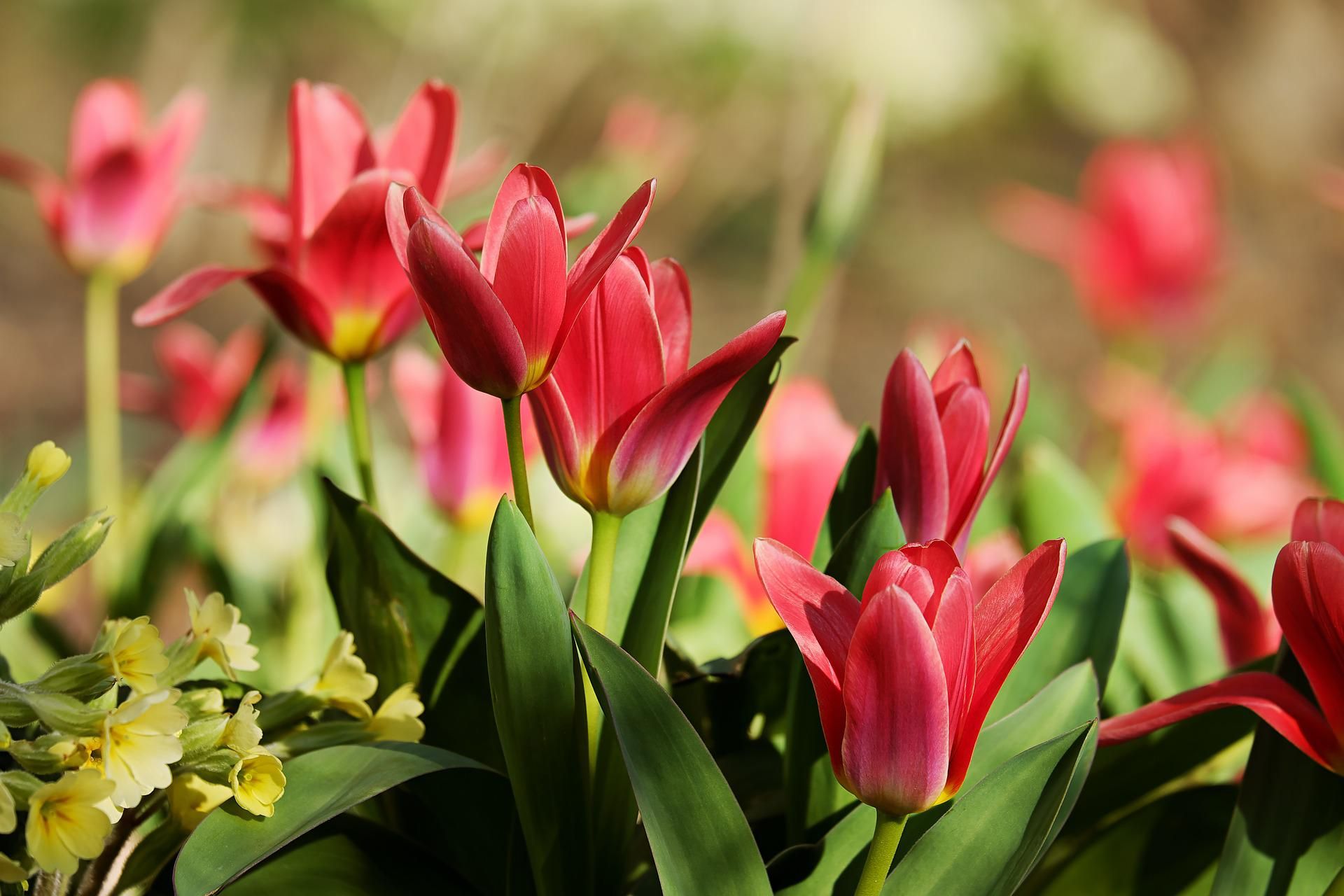Do you love the look of springtime tulips and daffodils peeking up through the ground? Well, it's easy to enjoy their beauty year after year by planting bulbs in your garden.
Bulbs are tough and can withstand a bit of cold weather, so you can plant them early in the fall. Additionally, they're easy to grow and can provide a beautiful array of colors in your garden. Here are some tips for planting bulbs.
What You’ll Need
Image credit: Natallia Ustsinava via Shutterstock
Before you start the preparations, make sure you have everything you'll need:
- Your choice of bulbs
- Shovel or garden trowel
- Gloves
- Organic matter
- Mulch
Step-By-Step Guide To Planting Bulbs
Are you looking to add some color to your garden this spring? One of the best ways to do that is to plant bulbs! Here is a step-by-step guide on how to plant bulbs:
Step One - Choose The Right Bulbs
Image credits: ZhakYaroslav via Shutterstock
There are many different types of bulbs to choose from, and the right ones will depend on a few factors.
Different types of bulbs thrive in different climates, so it's important to choose ones that will do well where you live. If you're not sure, ask your local nursery or gardening center for advice.
Additionally, you should choose bulbs that will give you the blooming schedule you want for your garden. Some bulbs bloom early, while others bloom later in the season. It's best to stagger their blooming periods so you can enjoy a colorful view all year round.
The amount of sun and shade in your garden is equally as important. Different bulbs prefer different amounts of light, so it's important to choose ones that will do well in the conditions of your garden.
And finally, your budget. Bulbs come in a wide range of prices, so it's important to choose ones that fit within your price range.
Step Two - Pick A Location
Image credits: Mariia Boiko via Shutterstock
One of the most important things to consider when planting your bulbs is choosing the right location. The location you choose will determine how well your plants grow and how healthy they are. Here are a few things to consider when choosing a location for your bulb planting:
Sunlight: Make sure the location you choose gets plenty of sunlight. Your plants will need at least six hours of sunlight per day to thrive.
Soil: The soil in the location you choose should be rich and loose. This will help your plants roots get established quickly and allow them to absorb nutrients easily.
Drainage: Good drainage is essential for bulb planting. The last thing you want is for your plants to sit in waterlogged soil. Choose a location that has good drainage to avoid this issue. If you have heavy clay soil, you may want to mix in some sand or organic matter to help with drainage.
Protection from predators: You also want to choose a location that will protect your plants from predators. Predators such as deer, rabbits, and rodents can wreak havoc on your garden. Choose a location that has fencing or other forms of protection to keep these animals out.
Step Three - Prepare The Soil
Image credits: OlgaPonomarenko via Shutterstock]
Loosen the soil to a depth of 12 inches with a shovel or spade. You may add organic matter such as compost, rotted leaves, or aged manure to improve drainage and help retain moisture.
Then, dig the hole. The hole should be at least twice as deep as the height of the bulb. For example, if you're planting a daffodil bulb that is 2 inches tall, you would dig a hole 4 inches deep. This gives the roots plenty of room to grow.
The objective is to plant the bulbs in groups of six, at a minimum. The more bulbs that are clustered together, the nicer the display.
Step Four- Plant The Bulbs
Image credits: FotoHelin via Shutterstock
Place the bulb in the hole, pointed side up and space out the bulbs at least twice their own width. Carefully cover the bulbs with soil and gently firm with the flip side of a rake. Avoid stepping on the soil as this can harm the freshly planted bulbs. Water well to help settle the soil around the bulb.
Step Five - Mulch The Area
Image credits: manfredrichter via Pixabay
Once the bulbs are planted, you can add a layer of mulch to help protect them from extremes in temperature and keep the weeds down. You can use 2 to 3 inches of leaf mulch, wood mulch, or straw mulch to help hold in moisture.
Step Six - Wait for Spring!
Image credits: Couleur via Pixabay
Now all you have to do is wait for springtime when your bulbs will start to sprout and bloom! Enjoy your beautiful garden!
But you may be thinking, what are the best bulbs for my garden? Once you've considered all of the factors above, you're ready to choose the right bulbs for your fall garden. Here are a few favorites:
Tulips: These classic spring flowers are available in a wide range of colors, so you can create a beautiful tulip garden that blooms early in the season. Tulip bulbs are best planted in November.
Daffodils: Another classic spring flower, daffodils are available in both yellow and white varieties. They make a great addition to any spring garden. Daffodil bulbs are best planted at the end of September.
Crocuses: One of the first flowers to bloom in the spring, crocuses come in a variety of colors including purple, yellow, and white. They're perfect for adding color to your garden early in the season. Crocus bulbs are also best planted end of September.
Alliums: These unusual flowers bloom in the summer and come in a variety of colors including pink, purple, and white. They make a great addition to any summer garden. Allium bulbs are best planted in September or October.
No matter what type of bulbs you choose, be sure to plant them before the first frost of the season. This will give them time to establish roots so they can bloom beautifully in the spring. Happy planting!
Ready For Fall Planting!
Bulbs are a great way to add some color and excitement to your garden. They are easy to plant and can withstand a bit of cold weather, so you can plant them early in the fall. Additionally, they come in a variety of colors, so you can find the perfect bulb for your garden. Do you have any tips or tricks for planting bulbs? Leave a comment below!

